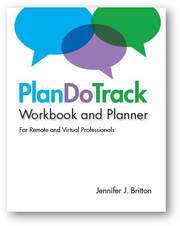So, how do we make remote work, work? There are of course some significant differences – including future immediate disruptions, less time spent with colleagues and the autonomy of working on projects.
This month here at the Teams365 blog, we’ll continue exploring different areas and parts of the remote work space. If this is a topic you are interested in, be sure to check out these other remote posts.
In today’s post I wanted to share four things to keep an eye on when you are working remote:
#1 – Create a dedicated work space. Having a dedicated work space, which doesn’t take over the entire house is critical. It’s often a fine balance between having space to focus, and a place to put away (or close the door). Be sure to make it effective, quiet and well lit. Dollar stores can be a great place to pick up the office supplies you need in order to get started, and bins and plastic boxes can keep things corralled. Is there a closet you can dedicate some space in for filing materials needed? What about noise and privacy? Security for your files? Does anything need to be updated in your homeowner’s insurance policy to reflect your new work space?
#2 – Make a point to establish routine that will get you moving and in connection with others. Isolation is one of the more common challenges for remote workers. This is where establishing a routine to “get you out of the office” on a regular basis can be of benefit. Maybe you want to take part in a lunchtime exercise class (I swim 3-4 times a week) or maybe you want to tap into breakfast meetings held in your community. Consider the things that will get you connecting with others – in the in person and virtual space.
#3 – Consider your rhythms. We each have a different rhythm for work. Recent studies are showing that remote workers can be more productive than their counterparts in offices. Some of this may be due to the flexibility of working WHEN you want. I also often recommend to organizations to consider a set of “core hours” where everyone (or a majority) of people are available. This allows for meetings to be called where most people can attend, and it also provides for additional windows for work to get done. Maybe core hours are 10 – 1 pm PT/1 – 4 pm ET every day or 10- 1 pm ET/7 – 10 am PT or some other time frame.
As a professional, when are you at your prime? What will help you get your best work done?
#4 – Create boundaries. As I wrote in last week’s post, boundaries are critical for remote work success. It’s easy to find yourself pulled in many directions, especially if you are part of multiple matrix teams. What are the boundaries what are important for you? (Consider time worked, time available outside or normal hours, etc.) Consider what you need to do to communicate these clearly to others you interface with.
Enjoy!
Jennifer
Leadership | Teamwork | Business Success
Author of multiple books including Effective Virtual Conversations (2017), PlanDoTrack (2019) and From One to Many: Best Practices for Team and Group Coaching (2013)
Follow along with the #90DaysPlanDoTrack series over at Instagram @CoachingBizBuilder
Join the conversation at the Conversation Sparker Zone - our online community where you can explore virtual and team issues, coaching, productivity and business development.
Pick up a copy of Volume 1 of the Weekly Journaling Prompts in a digital format. Print it out and take it with you for some inspiration and writing on the go! Available at the Potentials Realized Store.
For those looking for tips, tools and ideas about remote work and support for your remote teams, be sure to check out these tags and resources.

 RSS Feed
RSS Feed





